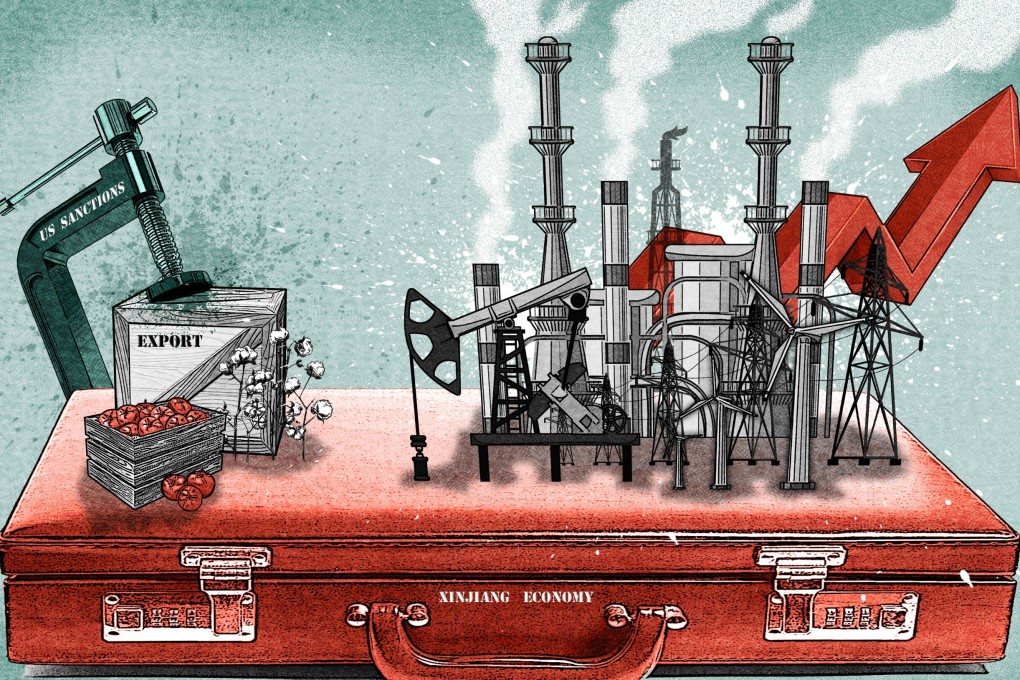How is Xinjiang’s economy holding amid US sanctions, and can China keep supporting its ‘great burden’?
- The US earlier this year banned cotton and tomato products from Xinjiang over alleged human rights violations and the widespread use of forced labour in the region
- Xinjiang remains a major agricultural base, although unlike coastal provinces, its economy does not heavily rely on exports

This is the first in a series of stories looking at China’s Xinjiang province and how the far-western region is coping economically under a series of US sanctions over alleged human rights violations and the widespread use of forced labour.
But with the unprecedented coronavirus stimulus packages around the world spurring consumption and increasing demand for cotton, a key material in garments and other textile products, the fallout has not been as bad as first feared.
At the same time, the region’s revenue is heavily dependent on the central government, with Beijing required to pour large amounts of money into the region.
The region is seen as being more important for “national and territorial security” rather than for it to become a “very strong economic province”, according to Gu Xuewu, the director of the Centre for Global Studies at the University of Bonn in Germany.

